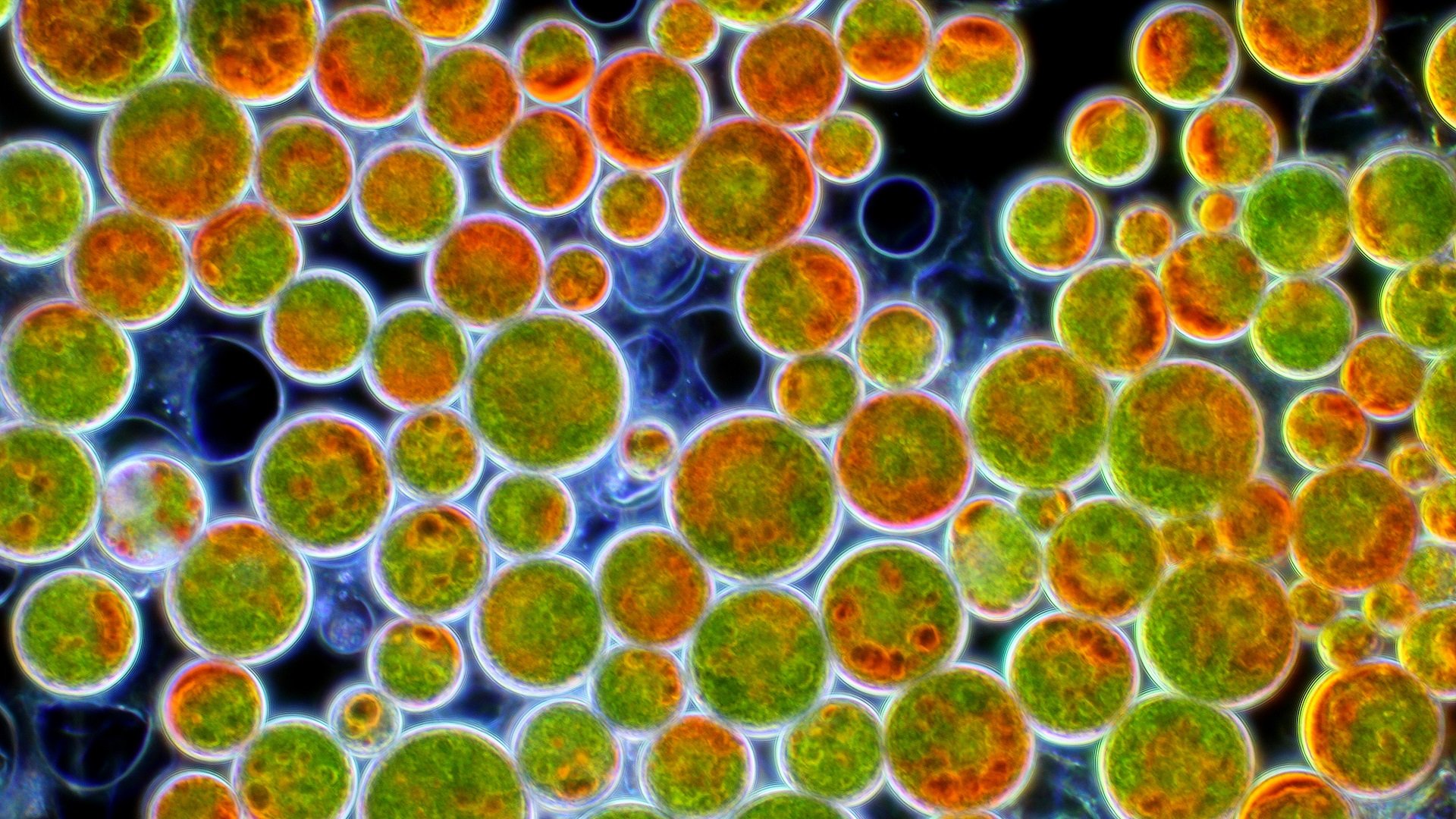Have you ever wondered why salmon, lobsters or flamingos are pink? They eat the red coloured algae Haematococcus pluvialis.
Have you ever wondered why salmon, lobsters or flamingos are pink? They eat the red coloured algae Haematococcus pluvialis.
Survival stage
Under high stress, this microalga contains a lot of astaxanthin, a red antioxidant. With this compound, Haematococcus pluvialis gives colour to its enemies. H. pluvialis can be found in three different cell stages: a non-motile stage, a motile biflagellate stage, an as a red cyst with a thick cell wall. The most astaxanthin is produced in this last cell type. This is a kind of survival stage in which the astaxanthin protects the alga from harmful solar rays.
Microbes colour the world
This pigment that colours flamingos pink belongs to the carotenoids. This group of dyes includes more than 600 yellow, orange, pink, and red colours. It also gives the carrot its orange colour, as the name suggests. Pink fairy shrimps, the favourite snack of the flamingo, also have carotenoids in their bodies. They do not produce this pigment themselves. They eat tiny algae, like H. pluvialis.
Chilean flamingos live in high altitude salt lakes in South America, where the UV radiation is very strong. The algae go into survival mode in this extreme environment, whereby they produce a lot of astaxanthin. The fairy shrimp filter the algae from the water and the flamingos pick out the fairy shrimp. In the intestines of the flamingos special enzymes convert the carotenoids into other pigments. The pigments are then taken up by fats in the liver and transported to the feathers and skin.
Astaxanthin production
The red algae are not only very interesting for flamingos. Astaxanthin is an effective antioxidant and is way more effective in the removal of free radicals than vitamin C. Moreover, the red pigment protects against UV-damage and has anti-inflammatory properties. H. pluvialis can contain up to 6% of its dry weight in astaxanthin and is therefore interesting for industrial production of this antioxidant. The food of the Chilean flamingo in ARTIS also contains astaxanthin. To give them a bright pink colour and help them find a partner.
Pink lake
H. pluvialis is not the only red microbe. Dunaliella salina also has this red color. In 2017 and 2022 this algae caused a color change in the Wagejot, a salty pond in Texel (a small island of the coast of the Netherlands). Due to extreme drought and high temperatures, a lot of water from this brackish lake evaporated, resulting in an extremely high salt concentration. This is deadly to most organisms, but Dunaliella salina is a halophile and grows very well at extreme saline conditions.
There are also lakes which have a red color more regularly, like Lake Colorada in Bolivia. This salt lake contains a large population of flamingos which, by eating the algae get their pink color.

